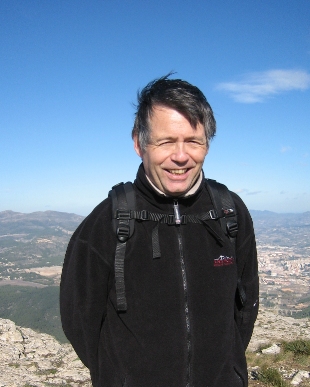| Oct ’16 | Oct |
| 8 | 15 |
| Oct ’16 |
| 11 |
| 15:00 |
| Oct ’16 |
| 13 |
| 12:00 |
| Oct ’16 |
| 14 |
| 11:00 |
 Estimadas compañeras, estimados compañeros:
Estimadas compañeras, estimados compañeros:
El profesor Jean-Éric Pin, del Institut de Recherche en Informatique Fondamentale (IRIF), CNRS y Université Paris-Diderot, visitará el Departament de Matemàtiques entre el 8 y el 15 de octubre. El profesor Pin es especialista en la teorías de semigrupos y de autómatas y lenguajes formales. Durante su visita impartirá un curso de seis horas titulado
«Stone duality and formal languges»
los días
- martes 11, 15.00-17.00,
- jueves 13, 12.00-14.00,
- viernes 14, 11.00-13.00
en el seminario de Álgebra del segundo piso de la Facultat de Matemàtiques.
Quedáis todos invitados.
Cordialmente,
—
Ramón
